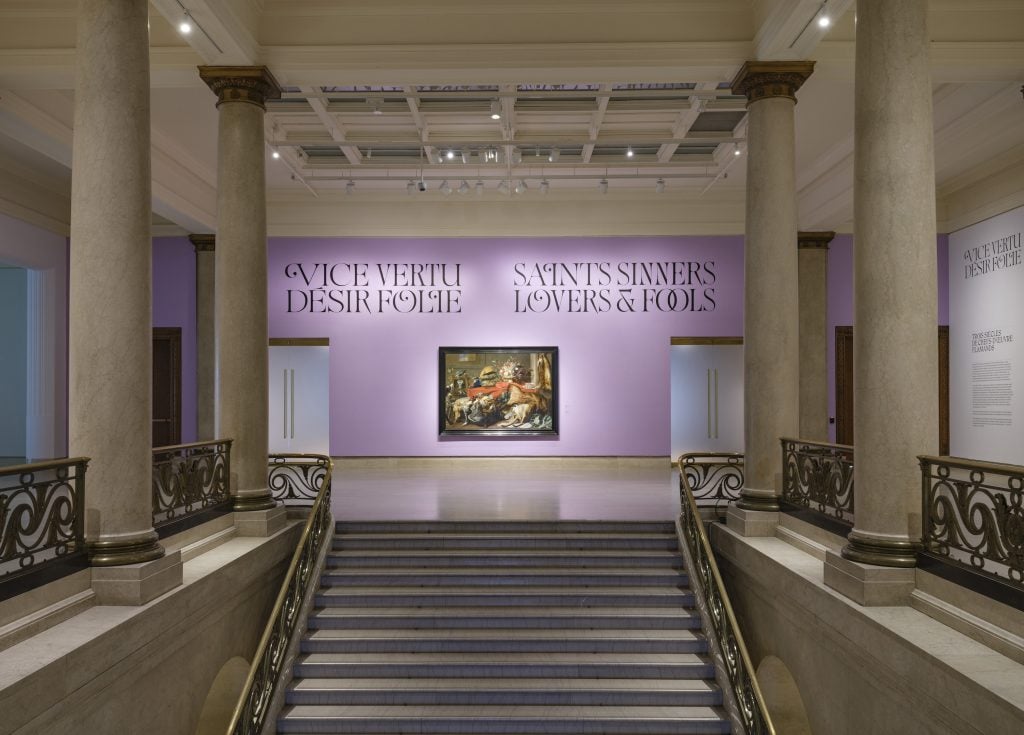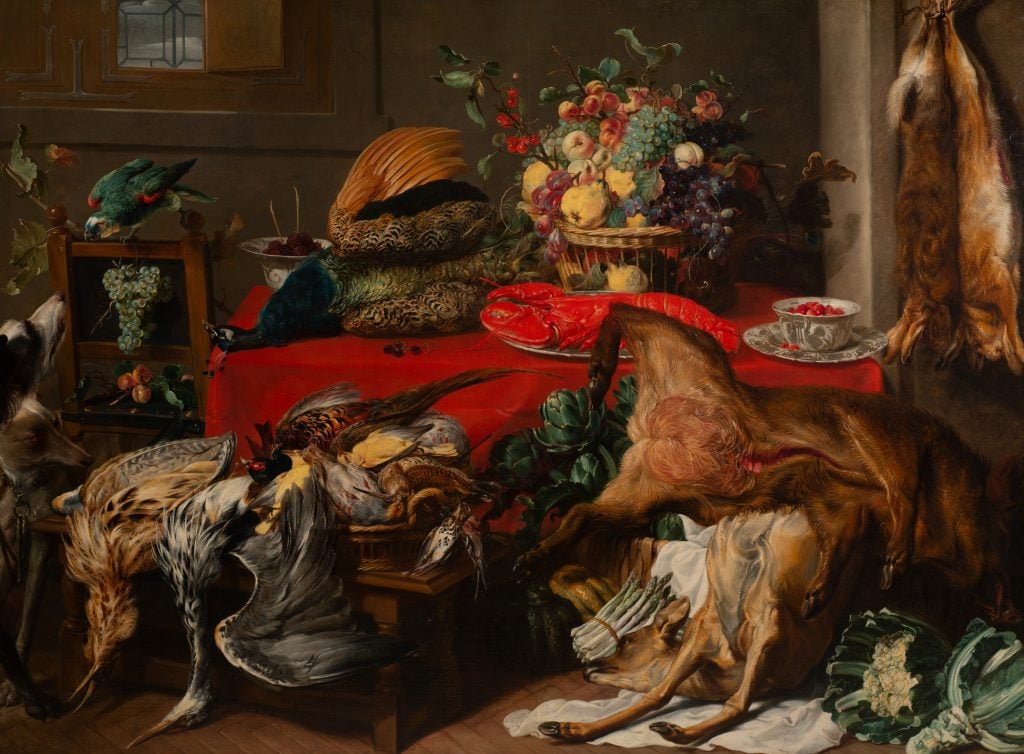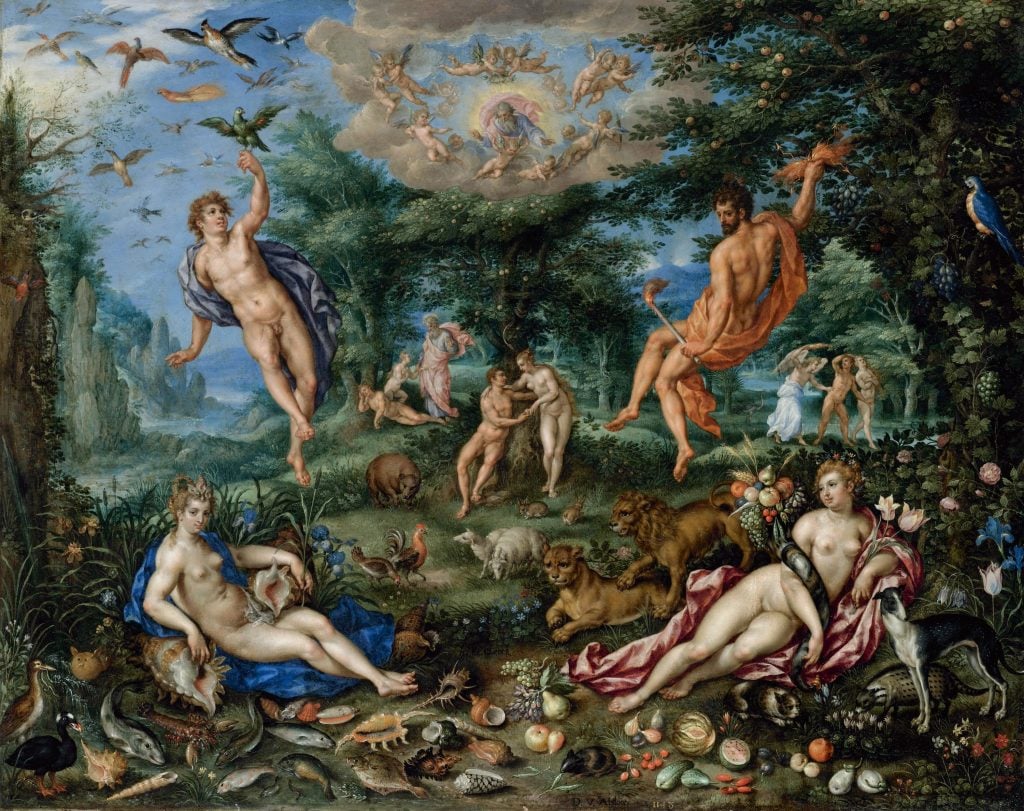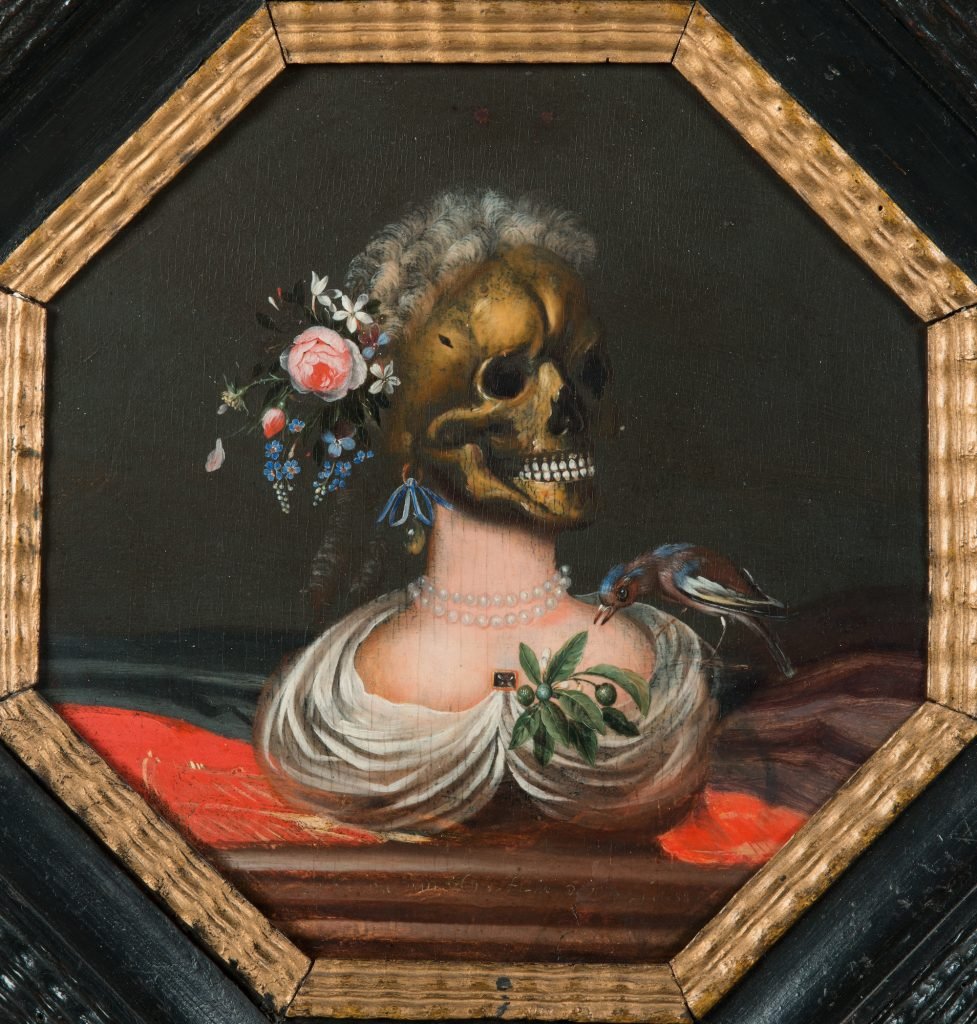
16 Oct In Montreal, An Exhibition Serves Up the Splendors, Sins, and Silliness of Flemish Art
Source Credit: Content and images from Artnet News. Read the original article - https://news.artnet.com/art-world/flemish-art-saints-sinners-lovers-fools-2549889
In the 16th century, a small sliver of the world became the pulsing nexus of a new world order—and with it blossomed one of the most robust eras in the history of Western art.
“Saints, Sinners, Lovers and Fools: Three Hundred Years of Flemish Masterworks,” an exhibition at the Montreal Museum of Fine Arts, tells the story of the rise of small-but-mighty Flanders from 1400 to 1700, through a curation of some 150 paintings, drawings, sculptures, prints, and objects (on view through October 25). Oil painting makes up the backbone of the show, with over 130 canvases on view by towering artists including Peter Paul Rubens, Pieter Bruegel, and Anthony Van Dyck, among many others (including several women).

View of the exhibition Saints, Sinners, Lovers and Fools: Three Hundred Years of Flemish Masterworks. Photo MMFA, Denis Farley
“This period is important because it had such an outsized impact on the history of art,” said Chloé M. Pelletier, the curator of the Montreal installation of the show. “Here we see the invention of oil painting and the flourishing of the publication industry. The print trade is largely based in Antwerp. In the late 16th century, Antwerp is also at the center of trade for vast global empires.” A new class of people arose in its wake, including middle- and upper-class merchants, bankers, and industrialists with disposable incomes who became engaged in the art world, and the nascent art market, and reshaped what art could be in a wholly novel way.
“Artists in this era had more possibilities of what they could create. It wasn’t just the Church commissioning an altarpiece,” said Pelletier, “There’s a merchant who wanted a portrait or a devotional work for their own home. The market becomes richer and richer and new genres arise to meet that market. Landscape painting emerges for the first time as an independent genre. We see genre scenes or scenes of daily life as well as those of raucous behavior.”

View of the exhibition “Saints, Sinners, Lovers and Fools: Three Hundred Years of Flemish Masterworks” 2024. Photo MMFA, Denis Farley
Curated thematically, rather than chronologically, the exhibition hopes to draw in new audiences who might have preconceived notions of what Flemish art is, and what this show is decidedly not is somber and stuffy. With extensive and rare loans from the Phoebus Foundation in Antwerp, Belgium, which co-organized the exhibition with the Denver Art Museum, viewers are given a sweeping and often sumptuous and at times downright bawdy window into the world of Flemish art. In Montreal, the exhibition is bolstered by 14 additional works from the museum’s collection. “It’s a new way to present this period in a way that’s more dynamic and gives people an access point,” said Pelletier.
Accompanying the exhibition is a sprawling, 432-page richly illustrated catalogue by Katharina Van Cauteren, the chief of staff of the Phoebus Foundation, who spearheaded the exhibition. After Montreal, the exhibition travels to the Peabody-Essex Museum in Massachusetts.
With one week left in the Montreal location, we chose a few of the dazzling artworks on view that might help you see Flemish art in a whole new way.
Frans Snyders, A Pantry with Game (ca. 1640)

Frans Snyders, A Pantry with Game (about 1640). © The Phoebus Foundation, Antwerp, Belgium.
Frans Snyders’s monumental still life A Pantry with Game greets viewers at the entryway to the exhibition, setting the tone for the visual abundance that awaits. Synders, who was a trailblazing still life painter in the 17th century, here builds up a toppling abundance of foods—fowl, lobster, artichokes, wild boar, rabbits, asparagus, fruits, and much more—in the foreground of the composition. The bounty looks as though it might tumble out from the canvas, or the viewer, alternately, might be able to step right in.
A cup of berries, a shiny lobster, and a bright red tablecloth add a dynamic focal point, at the center, holding the disparate elements together. While imagery such as this would have appealed to the new class of merchants with country homes where they arranged big feasts, the painting also offers a concurrent symbolic reading between desire and restraint at work that would have been legible to people of its time. The leashed dogs on the left of the canvas signify these contradictory impulses between indulgence and deserve.
Jan Massys, Riddle, The World Feeds Many Fools (ca. 1530)

Jan Massys, Riddle: The World Feeds Many Fools (about 1530). © The Phoebus Foundation, Antwerp, Belgium.
As the exhibition title “Saints, Sinners, Lovers, and Fools” suggests, one section of the exhibition focuses on the weird and wonderful comedic scenes of the era. Sometimes paintings of “fools” were intended as warnings against the pitfalls of various temptations. Other times, these over-the-top absurd scenes were intended to engage viewers in a visual game. The painting above, for example, is a rebus, a visual puzzle the viewer is asked to solve. Four symbols appear above the two jester-like men, which form a pictorial riddle. When said aloud the names of the four symbols sound similar to the Dutch idiom “the world feeds many fools.” These popular visual riddles are not unlike the meme-culture associating language and imagery we know today.
Hendrick de Clerck and Denijs van Alsloot, The Garden of Eden with the Four Elements (1613)

Hendrick de Clerck and Denijs van Alsloot, The Garden of Eden with the Four Elements (1613). © The Phoebus Foundation, Antwerp, Belgium.
This visually dazzling painting in oil on copper is a quizzical, but not uncommon mix of Christian and mythological imagery. The painting is the work of two artists. Hendrik de Clerck, a painter of altarpieces and other devotional pictures, who began to focus on cabinet pieces, painted the figures while the landscape is by an artist named Denis van Alsloot. Personifications of the four elements—air, fire, water, and earth—occupy the center of the composition, each surrounded by their defining attributes. These mythical figures are juxtaposed with biblical stories relating to Adam and Eve. Floating above the scene is a heavenly scene of god and a choir of angels. The painting, which hints at European colonial expansions through the exotic animals and fruit pictures, perhaps suggests an idealized scene in which the world exists harmoniously under Christianity.
Michaelina Wautier, Everyone to His Taste (ca. 1650)

Michaelina Wautier, Everyone to His Taste (about 1650) © The Phoebus Foundation, Antwerp, Belgium.
This is one of several paintings by women artists who forged unique paths here. In her own time, the artist Michaelina Wautier carved an unlikely, but celebrated path as an unmarried woman artist. Born to a wealthy family, her brother was also a painter, and Wautier, in the relative safety of her position, cultivated her talents painting still lifes as well as portraits and history paintings. Over the centuries Wautier was written out of history, with many of her works attributed to her brother. Only a few years ago did a true reappraisal of her legacy begin.
In this tender and exquisitely luminous painting, two boys interact; one boy in white holds an egg with a bite taken from it while another boy in black reaches as though to snatch it. Wautier represented children in her work on several occasions including a painting of boys blowing bubbles that’s in the collection of the Seattle Art Museum. Here the luminous handling of whites and the rosy cheeks of the boys is captivating and so life-like that one is tempted to reach out for the egg, too.
Catarina Ykens II, Vanitas Bust of a Lady (1688)

Catarina Ykens II, Vanitas Bust of a Lady (1688) © The Phoebus Foundation, Antwerp, Belgium
This uncanny image is the work of the artist Catarina Yken, the daughter of artist Jan Ykens. Her paintings are rarely known today, but she is best known for her still-life paintings, especially flowers. This unusual scene of oil paint on oak panel is both a morbid and comic vision. A brown-hued skull with white tufts of hair sits atop a lifelike woman’s bust draped with a pearl necklace, at the bottom of her décolletage, a sprig of leaves and berries catches the attention of a bird perched on her shoulder. Flemish artists, acquainted with the realities of death through war and illness, maintained their characteristic sense of levity.
Peeter Neeffs the Younger and Gillis van Tillborch, Elegant Couple in an Art Cabinet (1652, and ca. 1675)

Peeter Neeffs the Younger and Gillis van Tillborch, Elegant Couple in an Art Cabinet (1652, and about 1675) © The Phoebus Foundation, Antwerp, Belgium.
Perhaps no painting better encapsulates the entirety of the “Saints, Sinners, Lovers and Fools,” than Elegant Couple in an Art Cabinet. In the early 1600s, a new kind of collector had emerged—the connoisseur. These collectors were knowledgeable about the qualities that defined different artists and genres. With these connoisseurs concurrently arose the ‘kunstkammer’ or the collector cabinets where rooms of artworks and objects were displayed together. These rooms were sometimes depicted on canvas, too. Elegant Couple in an Art Cabinet encapsulates the genre well. The bourgeois interior features a couple at the center, with recognizable paintings such as Titian’s Rape of Europa and Jacob Jordaens’ Mercury and Argus. What’s truly fascinating about this composition, however, is that macro-XRF scans reveal that the couple was a later addition and that an original group of three male connoisseurs examining the paintings had been painted over. Such paintings reveal that collector cabinet paintings, too, changed hands were conceived as adaptable scenes that changed with new collectors, a living, shifting creation, rather than a static entity.
Source Credit: Content and images from Artnet News. Read the original article - https://news.artnet.com/art-world/flemish-art-saints-sinners-lovers-fools-2549889

